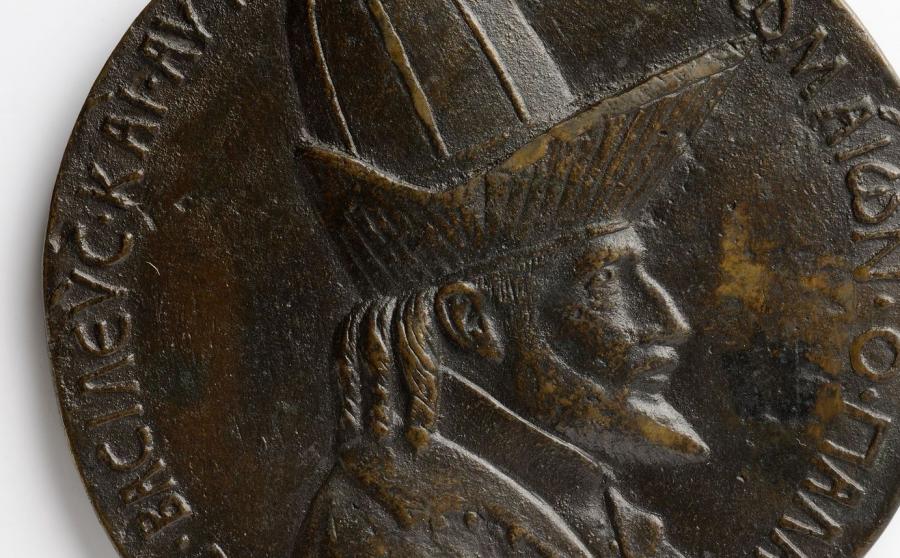Medal of John VIII Palaeologus
Information sur l’artiste
Antonio Pisano, alias Pisanello

Médaille de Jean VIII Paléologue,1438.
Image © Lyon MBA - Photo Alain Basset
Bust of John VIII Palaeologus to left / John VIII Palaeologus on horseback to right.
The invention of the medal in the Renaissance era revealed a desire to convey the personality and aspirations of the person portrayed, not just their family origins.
Pisanello, famous painter of the Quattrocento, created this medal – the first in history – on the occasion of the Council of Ferrara in 1438-1439. On the obverse, the face is rendered according to the ancient tradition of realistic portraits. This tradition had disappeared in the West after of the reign of Charlemagne, but persisted in Byzantium, in the East. It is accompanied by a legend stating the individual's name and titles.
The Emperor is wearing a remarkable hat and is depicted in profile; the legend, written in Greek (the official language of Constantinople), states that John Palaeologus is King and Emperor of the Romans. On the reverse, the Emperor is featured on horseback accompanied by two squires. He is engaged in private prayer before a Latin cross set in a mountainous landscape. This medal, signed by Pisanello in Latin and Greek (work of Pisano, painter), was an immediate success. In 1443, it was portrayed in a fresco in the Santa Maria della Scala church in Verona. All of the Italian princes then wanted their own medals, and demand for these items was far higher than for Pisanello's other artistic works. This medal quickly made its way across borders, and the first French example was cast in Lyon just before 1500 to commemorate king Louis XII and queen Anne of Brittany's return from Italy.
Italie
Fondue vers 1438-1439.
Bronze coulé
D. 10,1 cm
Legs Lambert en 1850
Inv. Med. Ital. 5 - L. 121





